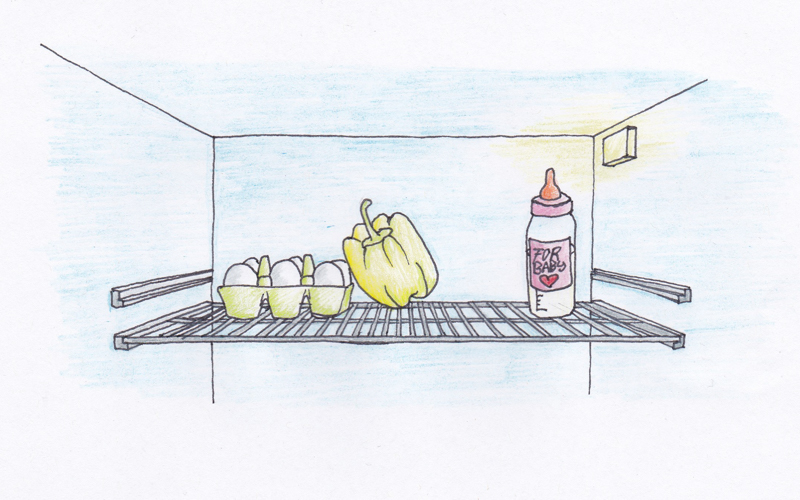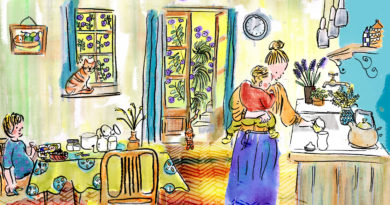Breastfeeding and Daycare
No Need to Stop Breastfeeding When Baby Goes to Daycare
Many mothers are asked to return to work only a few weeks after giving birth and, naturally, they are concerned about the compatibility of breastfeeding and employment. The truth is, returning to work need not be a reason to stop breastfeeding – even mothers of very small babies can work and continue to breastfeed. Learning about expressing, storing, warming, and offering breastmilk early will help to lessen the stress of the situation when the time comes.
Expressing breastmilk
Many mothers start expressing milk a few weeks before going back to work so that they can build up a supply of breastmilk in the freezer. Mother’s milk can be expressed either by hand or using a breast pump. Although some mothers can express large quantities of milk right from the beginning, I cannot emphasize enough that the quantities of breastmilk expressed do not necessarily reflect the amount of milk that is available, especially when the mother is not used to expressing milk. Many mothers feel very unsure after their first attempts at expressing milk and question whether they are producing enough milk to nourish their babies. Do not let this worry you! Your baby is much more effective and efficient at getting milk than you are at expressing it. With some practice, the amount of milk you are able to express usually increases and quite a lot of milk can be expressed in a short amount of time.
When a mother is working, she should try as much as possible to express her milk at about the time that her baby would have been breastfeeding, had they been together. With a bit of practice, she should be able to express over the day as much milk as is needed for the next and can deliver it straight to the refrigerator of her baby’s caretaker when she fetches her child at the end of her workday.
Because stress is the main cause for repression of the milk ejection reflex (let-down), she should try to relax as much as possible when she is expressing her milk. Some tricks that might help to get the milk flowing are: to drink a glass of water, have a nutritious snack and do some gentle breast massage beforehand, and to listen to relaxing music, look at a picture of the baby and smell an article of his clothing while pumping.
Storing breastmilk
Stored mother’s milk should be kept cold, and once warmed must be discarded if not used.
Breastmilk should be cooled immediately after it has been expressed, at best by placing it in the coldest part of the refrigerator: at the back of the bottom. Never store breastmilk in the refrigerator door because this place is too warm. To transport the milk home, place it, along with an ice pack, into a pre-cooled, insulated bag, and put into the refrigerator or freezer immediately upon arriving home. If this milk is to be sent out with the child on the following day, it is a good idea to store both the milk and the cooler used to transport it in the refrigerator overnight.
It is best to cool breastmilk in a refrigerator before freezing it. Many small quantities of mother’s milk collected over a day can be cooled separately and then put together for freezing, but it is probably advantageous to freeze breastmilk in fairly small quantities so that not too much milk has to be thrown away when the baby is not hungry. Because milk expands upon freezing, be sure to leave a bit of space in its container and not to seal the lid of any glass storage container used until the freezing is complete.
Warming breastmilk
As a general rule, food for a child should not be warmed in a microwave oven (microwaves do not warm evenly and there may be “hot spots” that can harm the child). A mother’s milk, in particular, should not be warmed in a microwave oven because doing so will destroy some of its valuable components. Breastmilk is best warmed by holding it under running warm, not hot, water until it is at about body temperature. If the water used is too hot, it also can destroy some of the valuable components of the milk. Frozen breastmilk should be defrosted in a refrigerator overnight whenever possible. Otherwise, it is best to defrost it by immersing it in cold water for a time before it is warmed.
Some babies like to drink expressed breastmilk cold.
Managing separations
Whenever possible, the baby should be breastfed shortly before separation and shortly after reunion with his mother. If Baby indicates that he is hungry shortly before Mother is expected to arrive, his caregiver should give him the smallest amount of expressed breastmilk possible, so that he will still be willing to breastfeed when reunited with his mother.
Many mothers and their babies very much enjoy breastfeeding after a day of separation, and revel in the physical closeness that breastfeeding gives them. The hormones released during breastfeeding also work to calm the mother, and this can be a very pleasant end to a workday, allowing mother and child to leave the excitements and frustrations of the day quickly behind them.
Additional resources:
Everything you need to know, from your rights as a breastfeeding mother in the workplace to suggestions on how to pump and store your milk over the workday, is available in this document (in English) from the Swiss Foundation for the Promotion of Breastfeeding (Stillförderung Schweiz, which has even more information in English available on its website).
See also: LLL International Online: Working and Breastfeeding
See also: LLL International Online: Pumping
By Bethany Brupbacher
Beth considers herself lucky to have had the option to not return to work after becoming a mother, and is today the happy stay-at-home-mother of three. She has been an LLL Leader since 2008.
Illustration by Lara Friedrich
Lara has been a freelance illustrator for Mothering Matters since early 2013. She is in her third year of University (majoring in Psychology) where she’s currently working as an assistant in a research project in pedagogy. Lara is also an assistant translator from German to English for various fiction books, and also works as a demo singer for the songwriter Kate Northrop.




